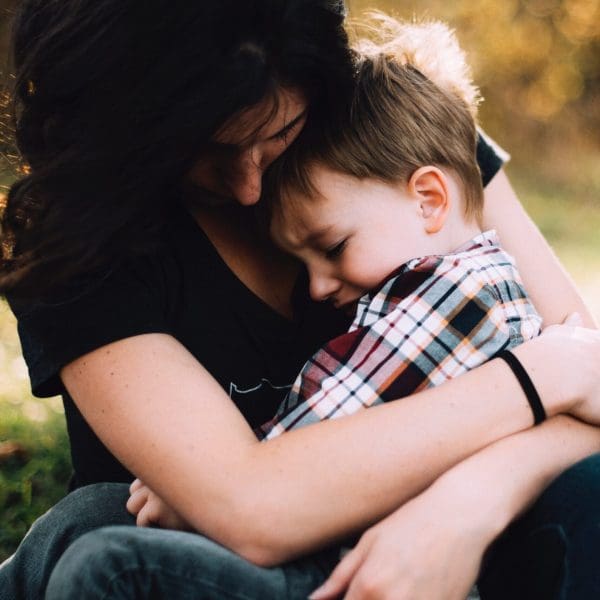Domestic Violence

Domestic violence:
Domestic violence refers to a pattern of abusive behavior in an intimate relationship, where one person seeks to establish and maintain power and control over another through physical, emotional, sexual, or economic abuse. It can occur between spouses, partners, parents, or other family members, and it affects individuals regardless of their age, gender, or socioeconomic status. Domestic violence has profound and lasting impacts on families and children, creating an environment of fear, instability, and trauma. Here are some reasons why domestic violence is particularly harmful:
Physical and emotional harm: Domestic violence often involves physical violence, resulting in injuries, pain, and long-term health consequences for the victims. Additionally, the emotional abuse and manipulation tactics employed by the perpetrator can lead to severe psychological and emotional distress for the entire family.
Cycle of violence: Domestic violence tends to be cyclical, with periods of escalation and calm, known as the “cycle of violence.” This instability creates a constant state of fear and anxiety for family members, as they never know when the next outburst or abusive episode will occur.
Impact on children: Witnessing domestic violence has detrimental effects on children’s well-being and development. It can lead to feelings of fear, confusion, and helplessness. Children exposed to domestic violence are at a higher risk of behavioral issues, low self-esteem, academic problems, mental health disorders, and perpetuating the cycle of violence in their own relationships later in life.
Interference with healthy relationships: Domestic violence damages the foundation of trust and mutual respect within a family. It erodes the sense of safety and security that should be present in a nurturing environment, making it difficult for healthy family relationships to flourish.
Social and economic consequences: Domestic violence can isolate victims from their support networks, making it challenging to seek help or access resources. It can also lead to financial dependence and economic barriers, making it harder for individuals to leave abusive situations or rebuild their lives after leaving.
Long-term effects: The impact of domestic violence extends beyond the immediate harm. Survivors may experience long-term physical, emotional, and psychological effects. Breaking free from the cycle of violence often requires ongoing support, therapy, and resources to heal and rebuild their lives.
Intergenerational impact: Domestic violence can perpetuate a cycle of abuse across generations. Children who grow up in abusive households are more likely to become either victims or perpetrators of domestic violence themselves. Breaking this cycle requires targeted intervention and support to provide healthier models of relationships and conflict resolution.
Trauma and mental health: Domestic violence often leads to significant trauma for victims, resulting in a range of mental health issues such as anxiety, depression, post-traumatic stress disorder (PTSD), and suicidal thoughts. The long-lasting emotional scars can impact individuals’ overall well-being and quality of life.
Economic instability: Domestic violence can result in financial control, economic abuse, and sabotage by the perpetrator, leaving victims economically vulnerable. They may face challenges in maintaining employment, accessing resources, and achieving financial independence, making it harder to leave an abusive relationship.
Barriers to seeking help: Victims of domestic violence often face various barriers that prevent them from seeking help or leaving the abusive situation. These barriers can include fear of retaliation, societal stigma, lack of awareness about available resources, financial dependence, limited social support, language barriers, immigration status concerns, and cultural or religious factors.
Barriers faced by marginalized groups:
Domestic violence can disproportionately affect marginalized communities, including individuals from minority racial or ethnic backgrounds, LGBTQ+ individuals, immigrants, and individuals with disabilities. These groups may face additional barriers to seeking help and accessing culturally competent support services.It is essential to recognize the gravity of domestic violence and its destructive effects on families and children.
Men of Domestic violence
Men as victims of domestic violence refers to situations where men are subjected to abusive behavior, including physical, emotional, verbal, or sexual abuse, inflicted by their intimate partners, spouses, or family members. It is important to recognize that domestic violence can affect individuals of any gender, and men can experience significant harm and trauma as victims of such abuse.
Men who experience domestic violence may face unique challenges and barriers in seeking help and support due to societal expectations, stereotypes, and a lack of awareness surrounding male victimization. Some common experiences and challenges faced by men as victims of domestic violence include:
Stigma and societal attitudes: There is a prevailing societal belief that men are always physically stronger and should be able to defend themselves, which can create barriers for men to come forward and seek assistance. Men may fear being ridiculed, not taken seriously, or facing disbelief when disclosing their experiences as victims.
Underreporting and lack of recognition: Due to stigma and social expectations, men may be less likely to report incidents of domestic violence, resulting in underreporting of their experiences. This can lead to a lack of recognition and understanding of the prevalence and impact of domestic violence on male victims.
Emotional and psychological impact: Men who experience domestic violence may suffer from emotional and psychological consequences, including feelings of shame, guilt, helplessness, and low self-esteem. They may also experience symptoms of anxiety, depression, post-traumatic stress disorder (PTSD), and other mental health issues.
Physical harm: While physical abuse against men may be less commonly acknowledged or discussed, it can still occur. Men can suffer physical injuries, such as bruises, cuts, broken bones, or other forms of physical harm inflicted by their abusive partners.
Legal and systemic challenges: Men may face specific legal and systemic challenges when seeking help or protection. There may be limited resources or support services available specifically tailored to male victims, and legal processes may not adequately address their needs or provide appropriate protection.

Domestic Violence From children:
When discussing domestic violence, it is also important to acknowledge that there are instances where children or adolescents may exhibit violent or abusive behavior towards their parents or other family members. This is sometimes referred to as child-to-parent violence or adolescent-to-parent violence.
Definition: Child/adolescent perpetration of violence typically involves acts of physical, verbal, emotional, or psychological abuse directed towards parents or caregivers. The causes and contributing factors of such behavior can be complex and multifaceted, including issues such as family dynamics, underlying mental health problems, exposure to violence or trauma, substance abuse, or a lack of effective conflict resolution and coping skills.
Consequences: Child/adolescent perpetration of violence can have significant negative consequences for both the victim-parent and the child/adolescent. It can lead to physical injuries, emotional distress, strained family relationships, and long-term psychological harm. It is crucial to address this issue with sensitivity, understanding, and appropriate interventions to ensure the safety and well-being of all family members involved.
Interventions for child/adolescent perpetration of violence often involve a comprehensive approach that includes therapy, counseling, family support, and skill-building programs. These interventions aim to address the underlying issues contributing to the violent behavior, promote healthier family dynamics, improve communication and conflict resolution skills, and provide necessary support to all family members involved.
Addressing child/adolescent perpetration of violence requires a collaborative effort involving mental health professionals, social services, schools, and other relevant agencies. It is essential to create a safe and supportive environment where families can access the help they need, break the cycle of violence, and promote positive and healthy relationships within the family unit.
What to do if you are a victim of Domestic Violence:
Addressing and preventing domestic violence involves providing support, resources, and intervention to survivors, holding perpetrators accountable, and promoting education and awareness about healthy relationships. and can ensure that the most efficient support is being paid. Please visit our resources page for further support.
What to do legally if you and Your children are victims of d.v.
Addressing domestic violence requires a multifaceted approach involving legal protections, accessible support services, community education, and awareness campaigns. It is crucial to foster a culture that promotes healthy relationships, consent, gender equality, and non-violence to create safer environments for all individuals and families. In Washington State, there are two distinct types of orders that provide legal protection in cases involving domestic violence:
Domestic Violence Protection Orders (DVPO): These orders specifically address situations involving domestic violence, which includes acts of physical harm, threats, stalking, sexual assault, or other abusive behaviors committed by a family or household member. To obtain a DVPO, the victim must have a qualifying relationship with the abuser, such as being current or former spouses, domestic partners, family members, or co-parents. DVPOs offer comprehensive protection by granting various remedies, such as restraining the abuser from contact, prohibiting them from going near certain locations, granting temporary custody of children, and ordering the abuser to attend counseling or treatment programs.
Restraining Orders: Unlike DVPOs, restraining orders in Washington State can be requested by anyone, regardless of their relationship with the person causing harm. Restraining orders cover a broader range of situations, including harassment, threats, physical violence, or stalking, but they are not limited to incidents within a domestic context. These orders are typically sought when the victim does not have a qualifying relationship with the abuser or when the circumstances do not meet the specific criteria for a DVPO. Restraining orders may provide similar protective measures, such as prohibiting contact, setting boundaries, and ordering the abuser to stay away from certain locations.
It’s important to note that the specific requirements, application processes, and legal remedies associated with Domestic Violence Protection Orders and Restraining Orders vary.
Obtaining legal representation from our experienced attorneys is crucial to determine the most appropriate order for your case and understand its potential impact.
What happens when a domestic violence order is weaponized?
To “weaponize” a domestic violence order refers to a situation where someone misuses or manipulates the legal system and the protections offered by a domestic violence order for purposes other than genuine safety concerns. It involves exploiting the order as a tool to gain an advantage, control, or harm the other person involved in the relationship.
When a domestic violence order is weaponized, it typically involves making false or exaggerated claims of domestic violence, seeking the order as a means of revenge, retaliation, or as a strategy in a legal dispute, such as child custody or divorce proceedings. The person filing the order may intentionally misrepresent or distort facts, make unfounded allegations, or use the order to gain an upper hand in the legal process or to create obstacles for the other party.
Weaponizing a domestic violence order can have significant consequences for the person falsely accused. It can result in undeserved damage to their reputation, restricted access to their children, limitations on their personal freedoms, and legal complications. It can also undermine the credibility and effectiveness of the legal system designed to protect genuine victims of domestic violence.
It is important to note that weaponizing a domestic violence order is a serious matter and can potentially be considered perjury or abuse of the legal system, depending on the jurisdiction. If you believe that a domestic violence order is being misused or weaponized against you, it is advisable to seek our help. We can help you understand your rights, navigate the legal process, and present a strong defense to protect your interests.
Commonly Asked Questions
Violating a either of these orders can result in criminal charges and penalties, such as fines, jail time or probation. It can even affect your family law case. It is important to take these orders seriouls and comply with their provisions to avoid legal consequences.
Yes a domestic violence protection order can provide temporary custody of children, as well as other provisions to protect the victim and their children.
If you are experiencing domestic violence, it is important to take steps to protect yourself and your children.
Common forms of domestic violence include physical abuse, emotional abuse, sexual abues, and financial abuse.
Warning: Domestic violence is a complex issue, and the support and resources needed can vary based on individual circumstances. If you are unable to acquire our services do to finanical reasons we offer financing. If you are unable to procure financing it is recommended to reach out to local domestic violence organizations, hotlines, or helplines for personalized guidance and assistance.
